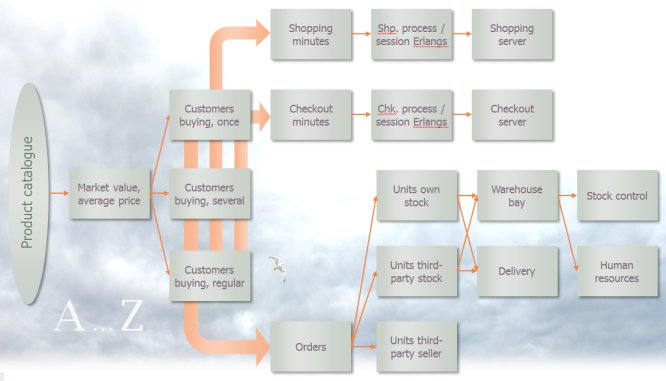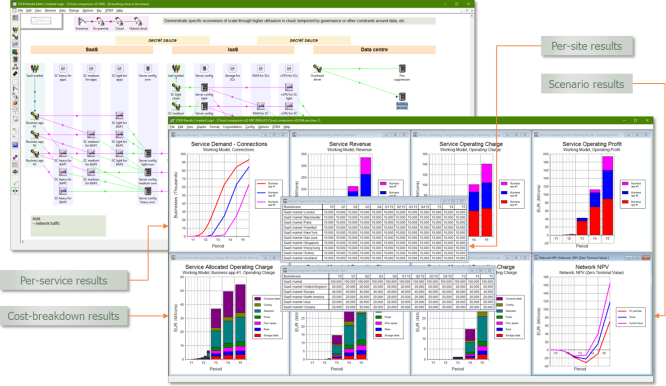Larry: How did you decide how many servers you needed
to install in your first data centre?
 Jeff: [With a twinkle in his
eye.] Well, we just kept buying them till the truck was full. You know,
it was our truck too, so the delivery charge was covered … Seriously, in
those days the business model was just ‘grow fast and make more money’;
you could see every machine as a profit centre, so we just expanded capacity in
line with projected traffic growth.
Jeff: [With a twinkle in his
eye.] Well, we just kept buying them till the truck was full. You know,
it was our truck too, so the delivery charge was covered … Seriously, in
those days the business model was just ‘grow fast and make more money’;
you could see every machine as a profit centre, so we just expanded capacity in
line with projected traffic growth.
Mark: Actually we had this monster spreadsheet which
just grew and grew from humble beginnings when we used to understand it and could
still verify the logic. Every time we added more interactive functionality to the
site, and all the Web 2.0 in-page updates, the
correlation between active users and actual traffic became more and more unpredictable,
never mind the balancing across server instances and background tailing of events.
We had to build a data centre just to host the spreadsheet!
Jeff: How did you work out what all those servers
were going to cost?
Larry: We hired a PhD student to create a state-of-the-art
simulation, and then of course we had to hire another one to validate it! I did
wonder if there might be a more visual process that the wider team could follow
… but we always had more money than we could throw at the server vendors,
and in the end we just built our own.
At that moment, the conversation is interrupted by Bill, their
server. (No, not that kind of server!)
Bill: I was at another table recently and this lively-looking
chap had all these amazing charts. [Reaching behind to the
dessert trolley.] I’m no expert, but one looked like a live simulation
of a process model for an online-retail platform, and then another had all these
layers with labels like SaaS,
PaaS, and IaaS, as well as a physical
layer of compute, networking, storage, racks, power, cooling and so on.
Voice-assistant on Larry’s phone: Our search
algorithm is highlighting a concentration of these terms on a company website in
Cambridge, UK; they don’t even have any AdWords!
Bill: So anyway, what can I get you?
Turning back to the table he finds that his clients have already
left. The fast train to Cambridge departs from platform 6 …
Bill: It looks like they left some keys behind …
No, wait, it’s a bitcoin; my first virtual
tip!

Figure 1: Outline structure of an online-retail platform

Figure 2: Multi-tiered cost model for cloud services in a physical data-centre
Further reading
Our Shopping in the cloud exercise
was presented at the STEM User Group Meeting in 2014. The multi-tiered cost model
shown above will be presented at the October 2016 event where it will be critiqued,
refined and extended live. Click
here for more details.